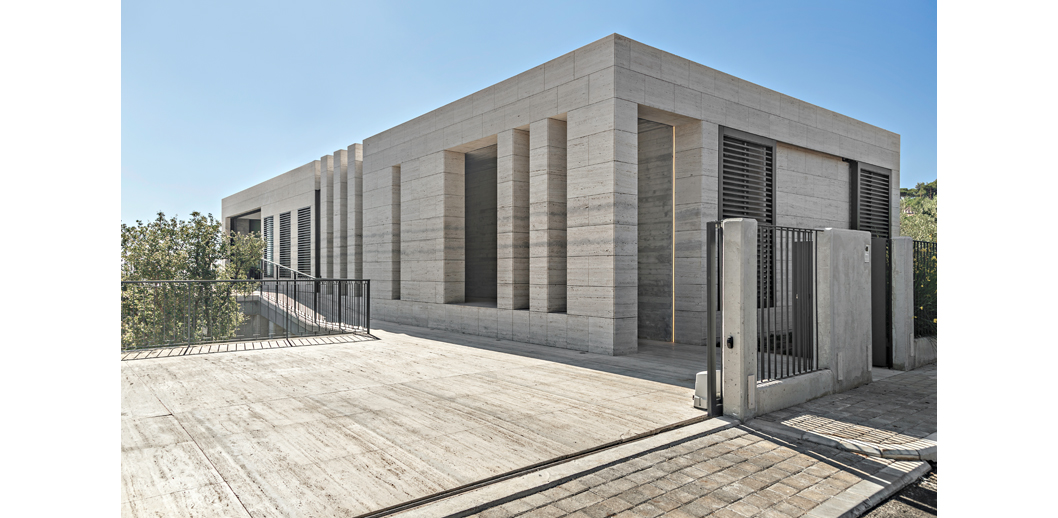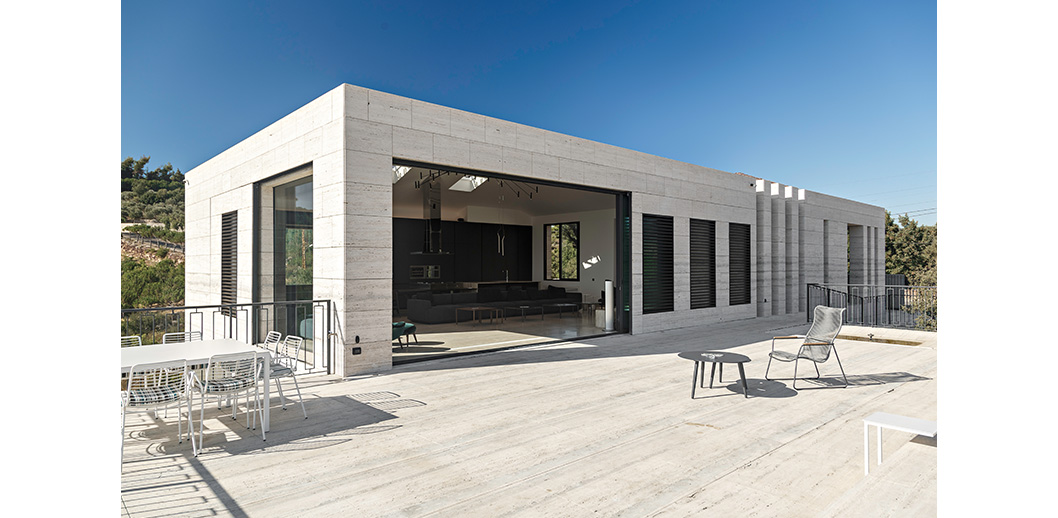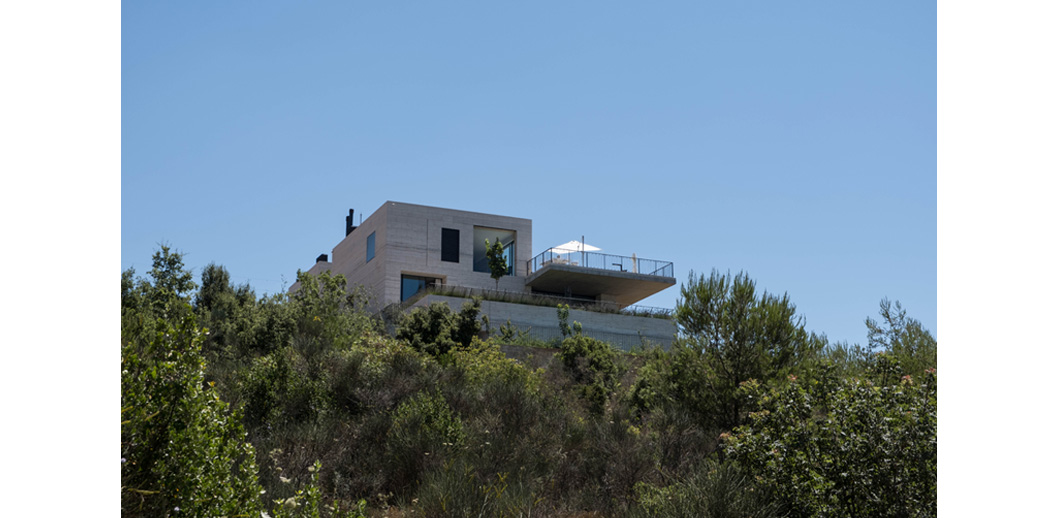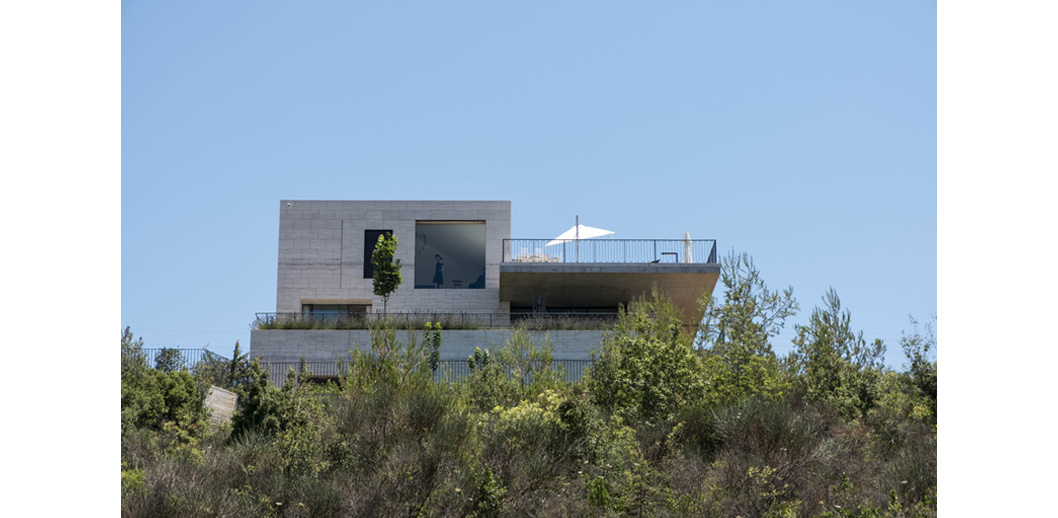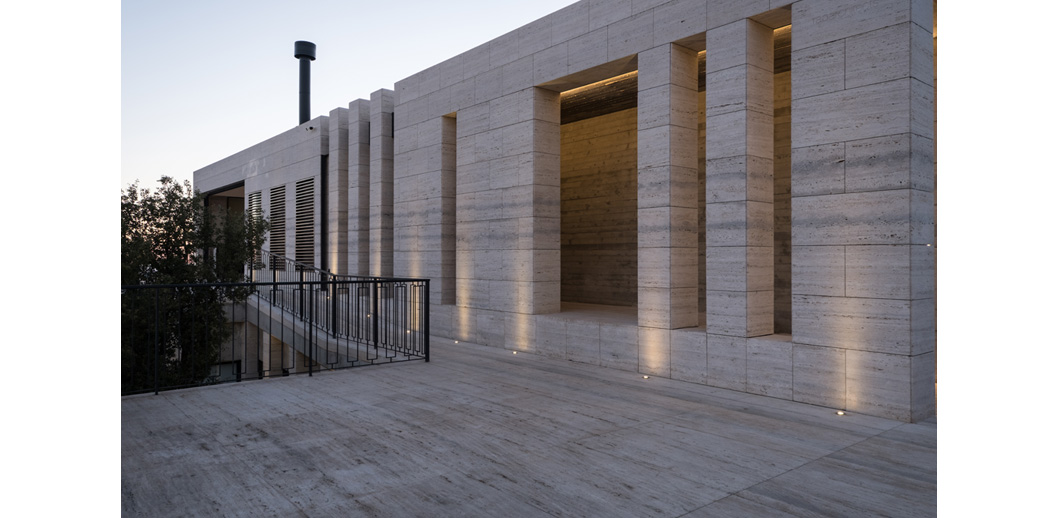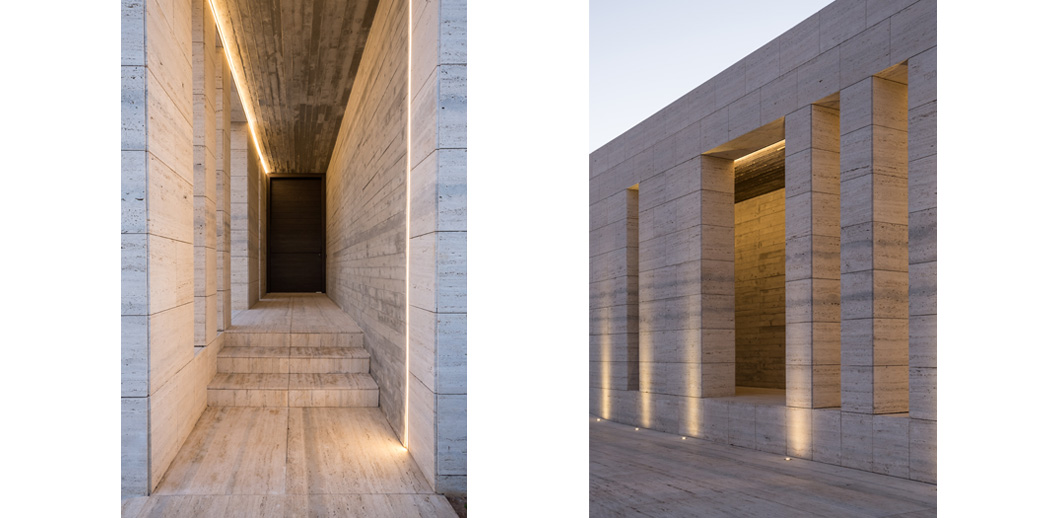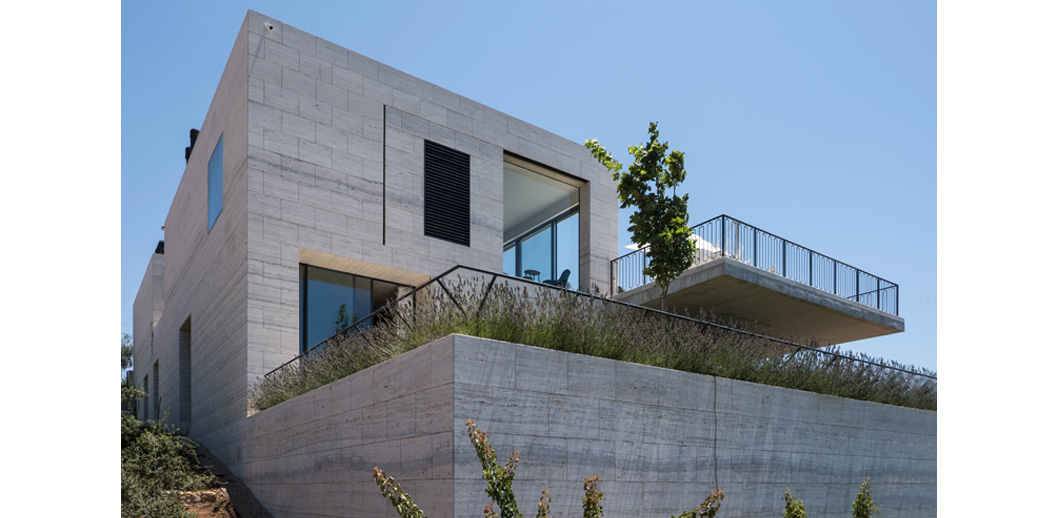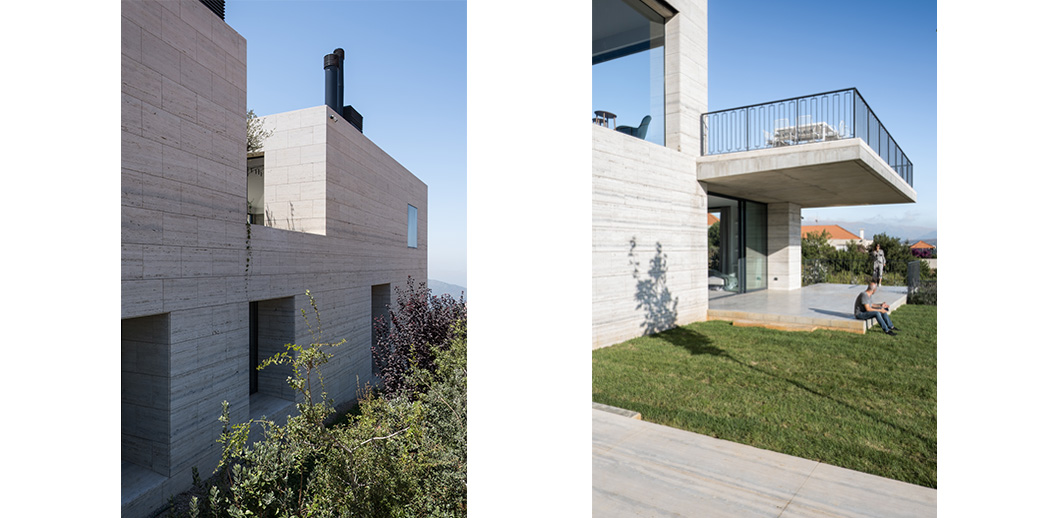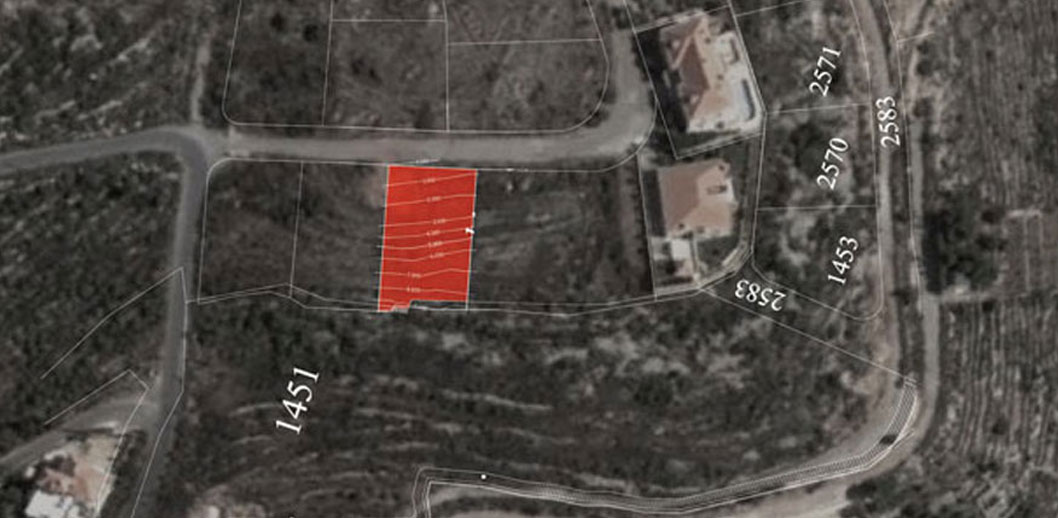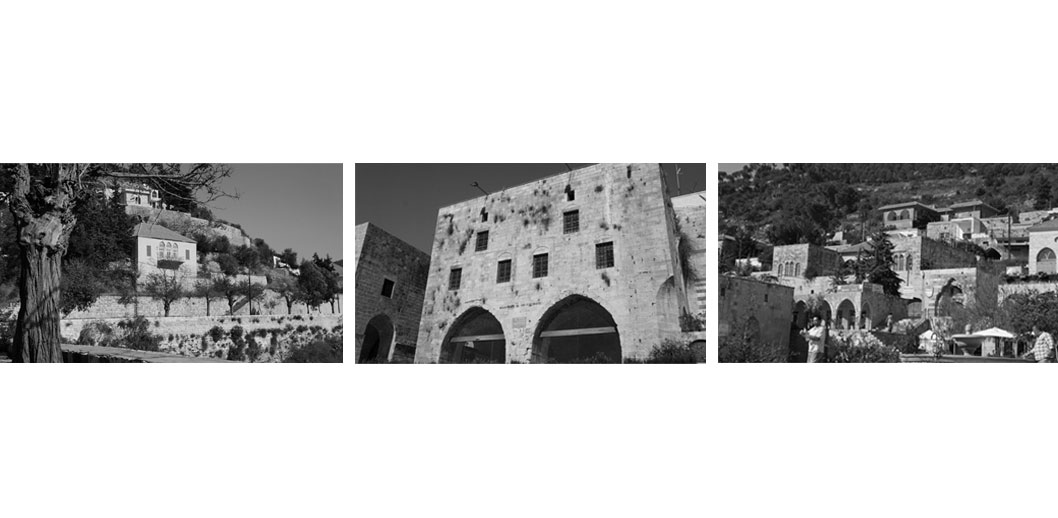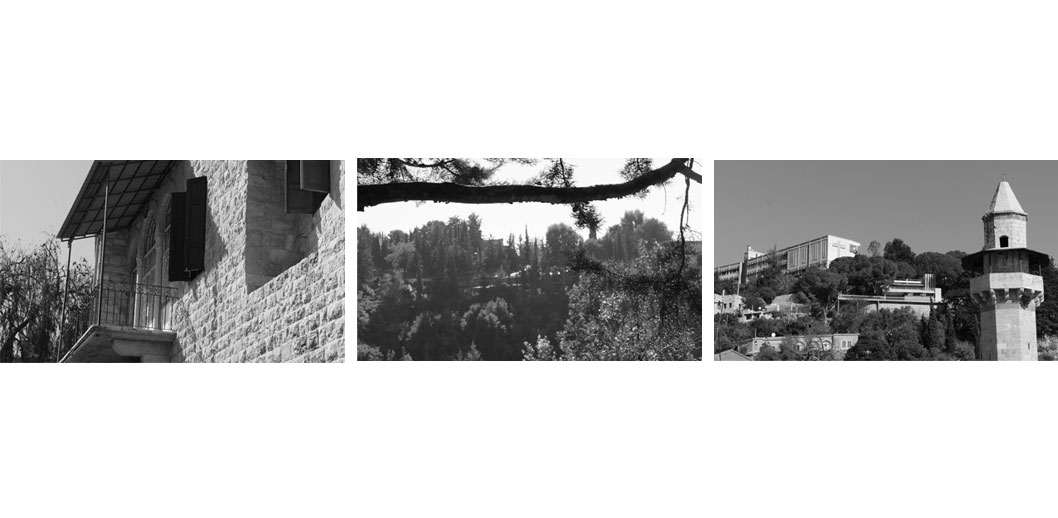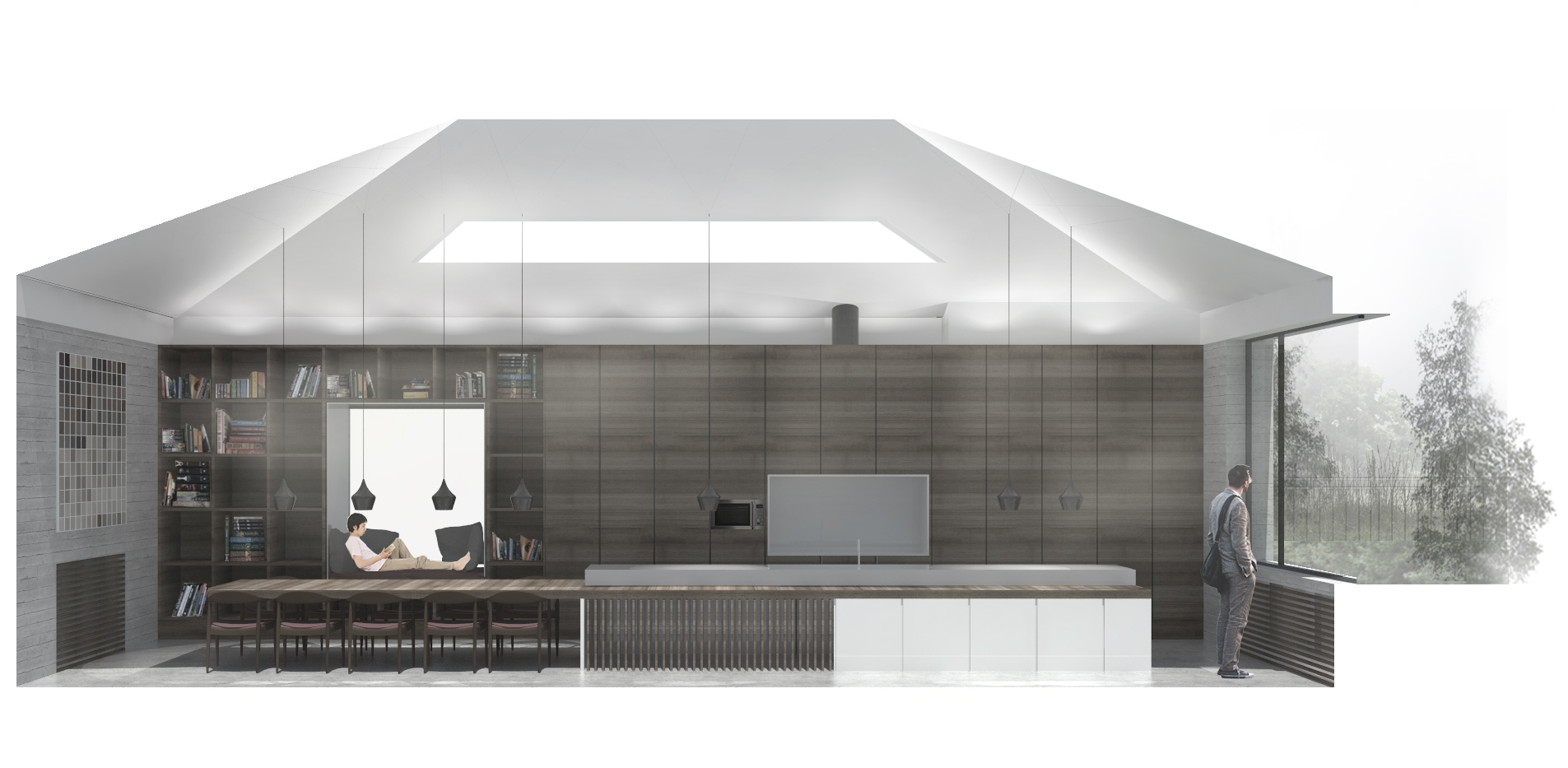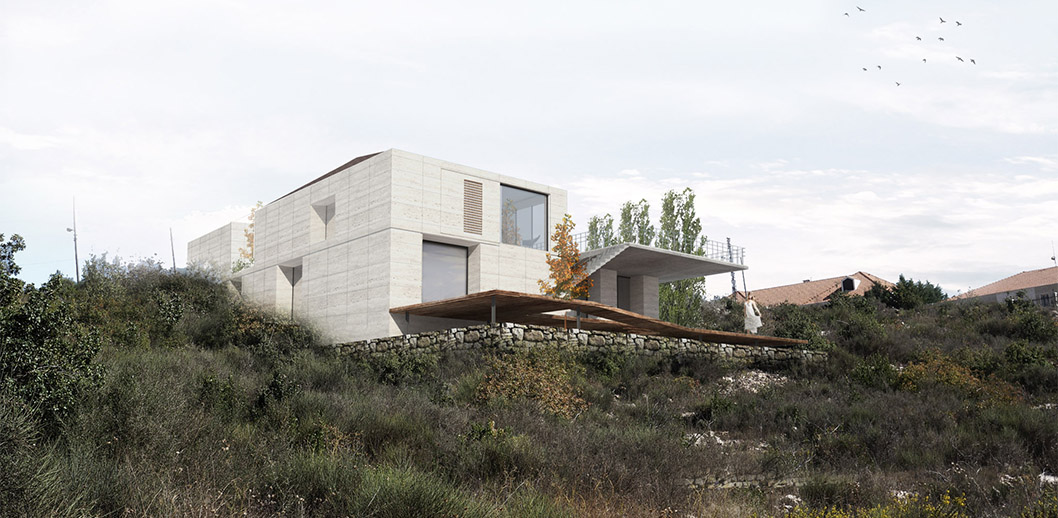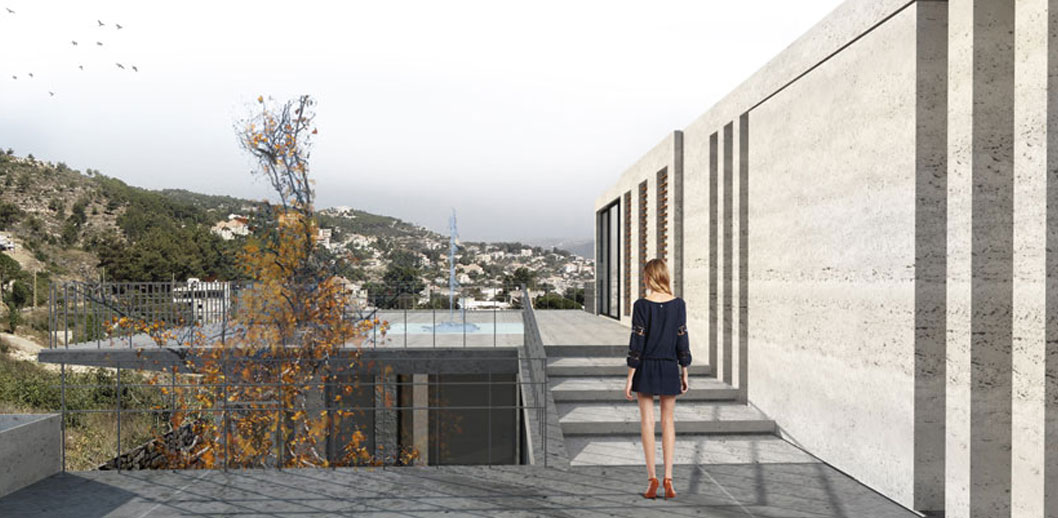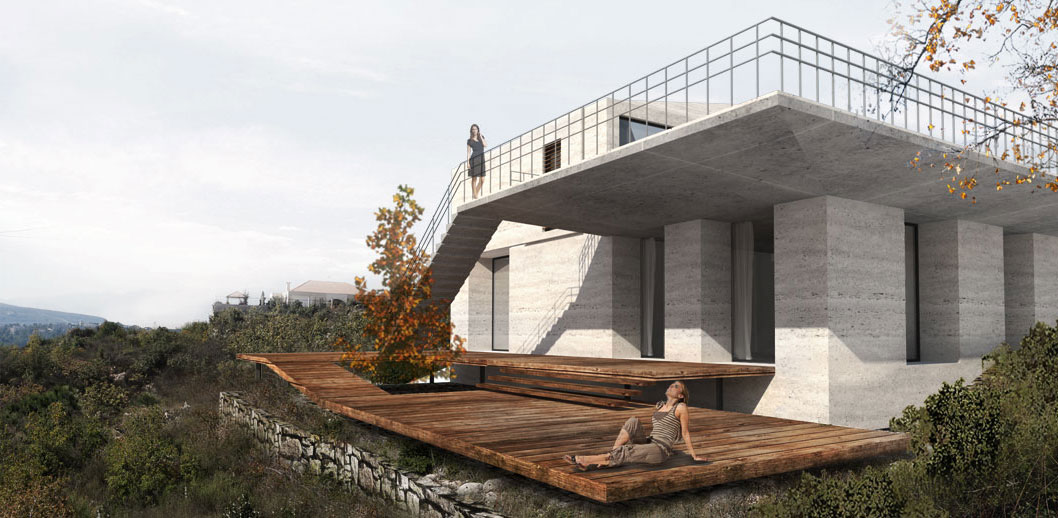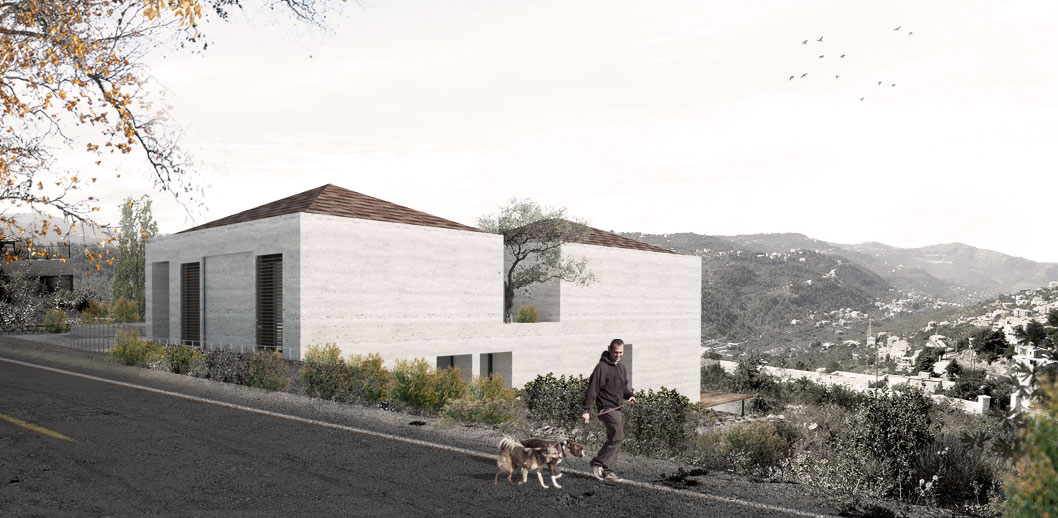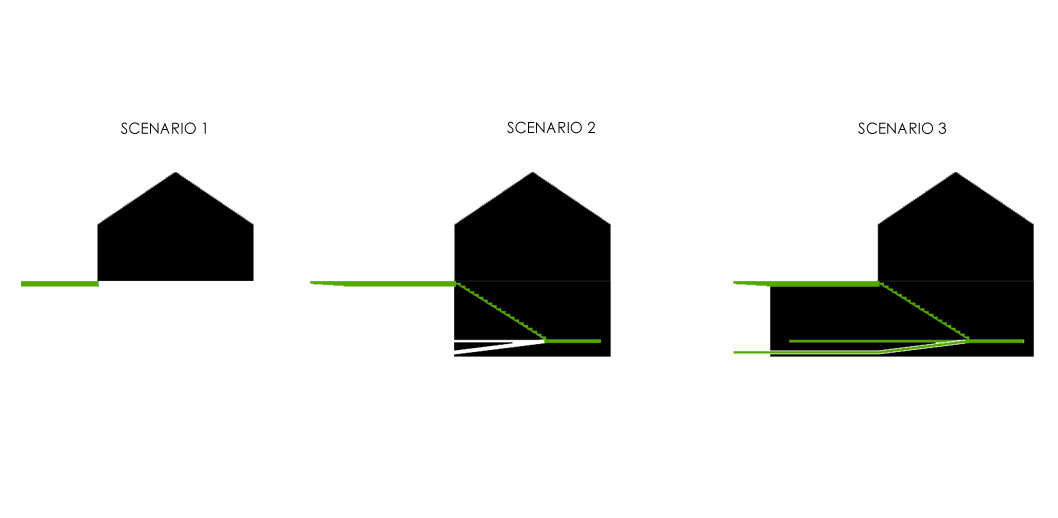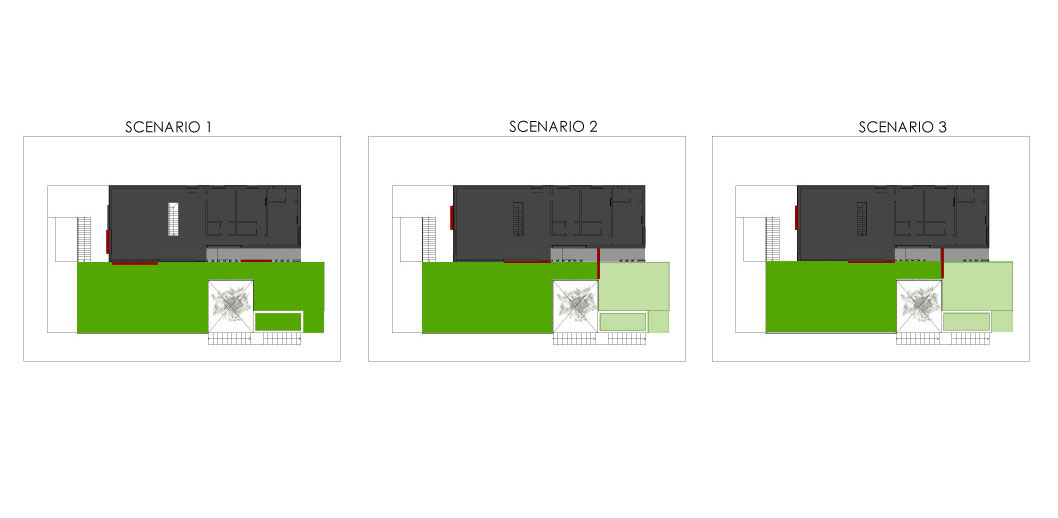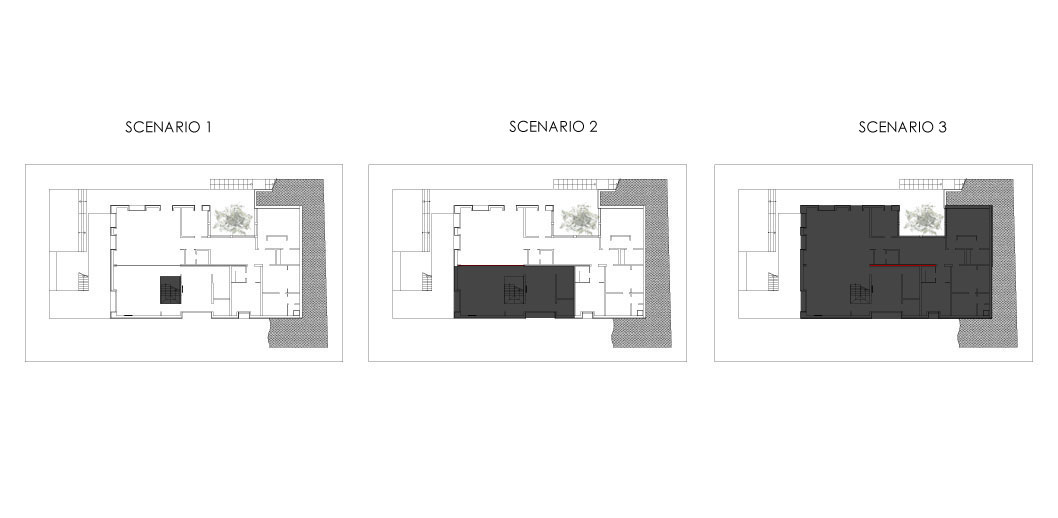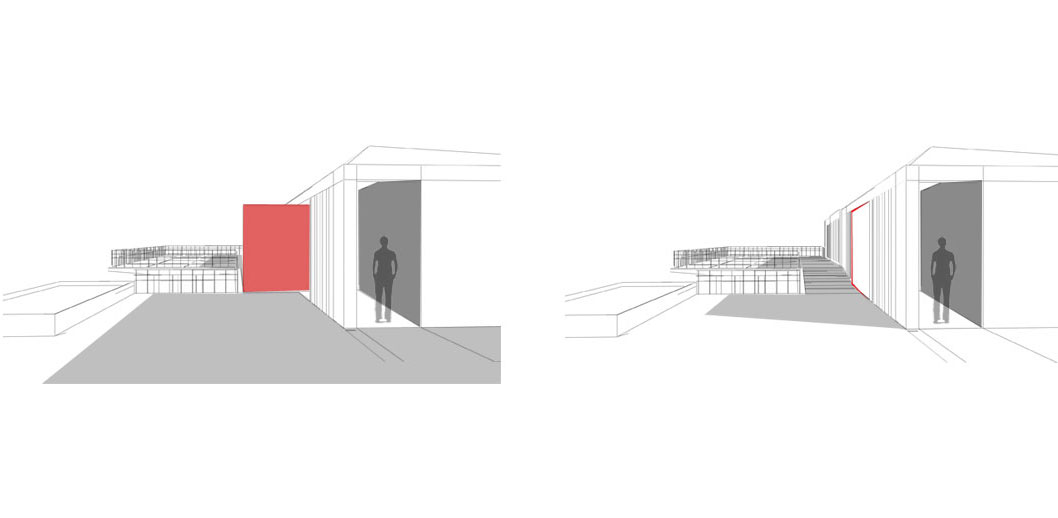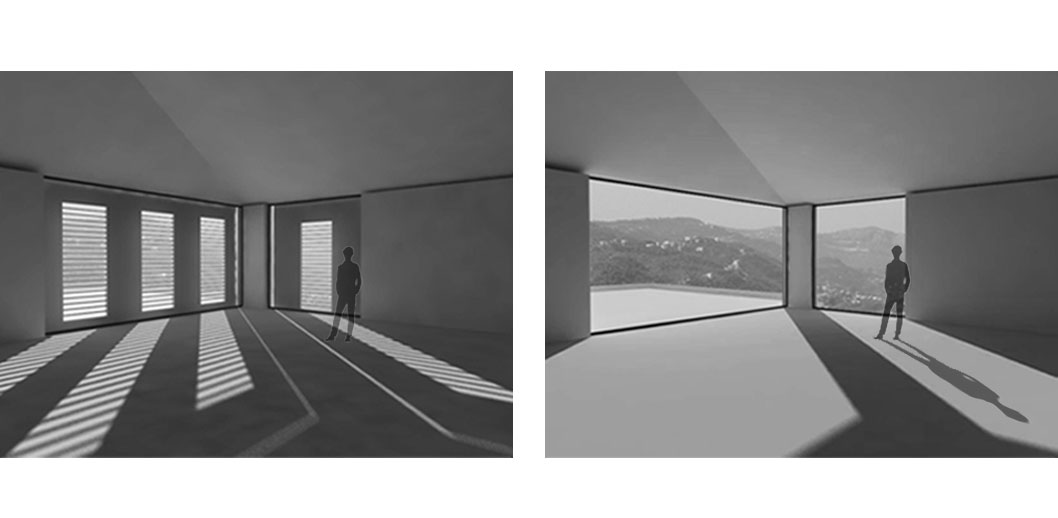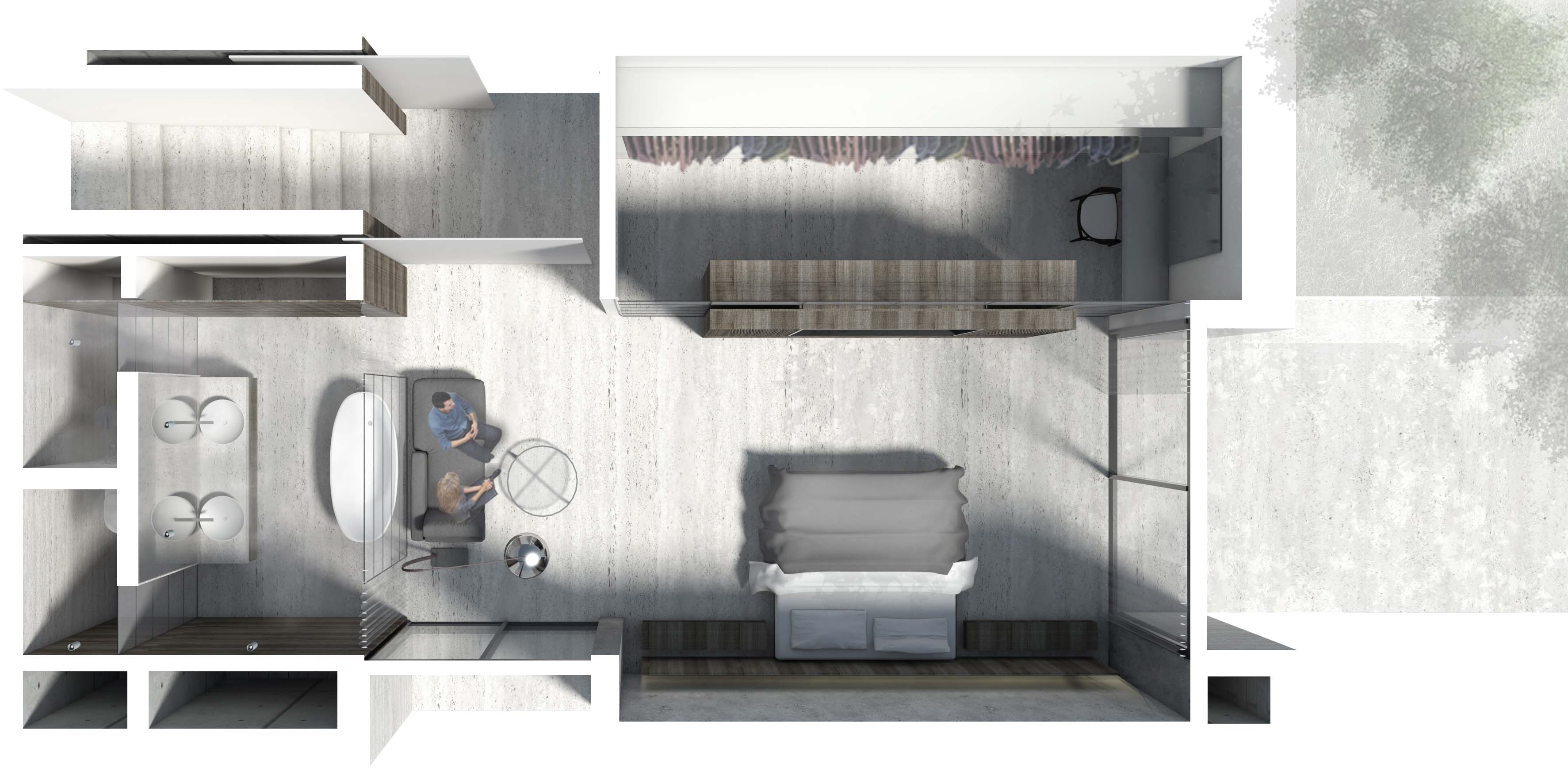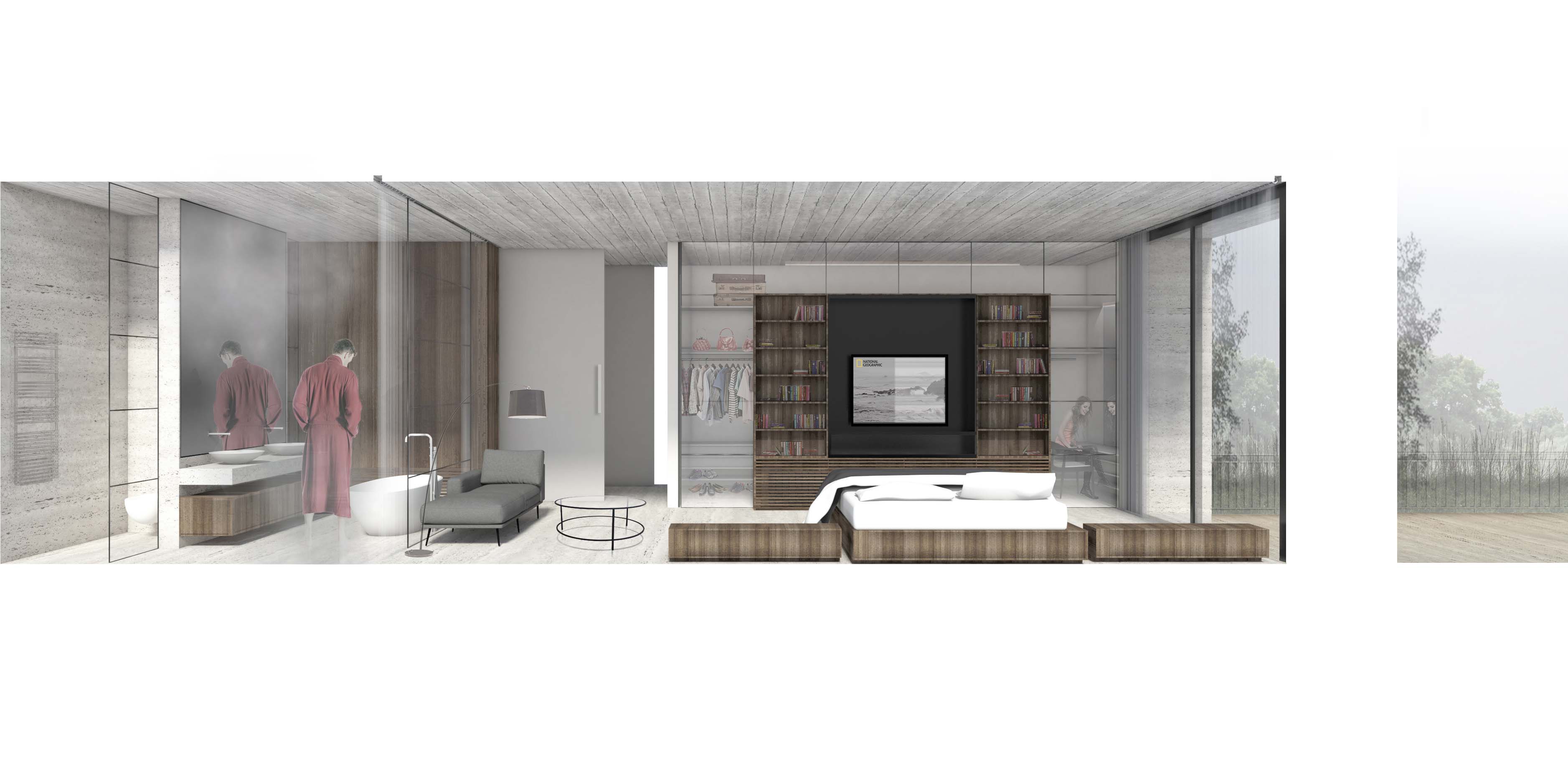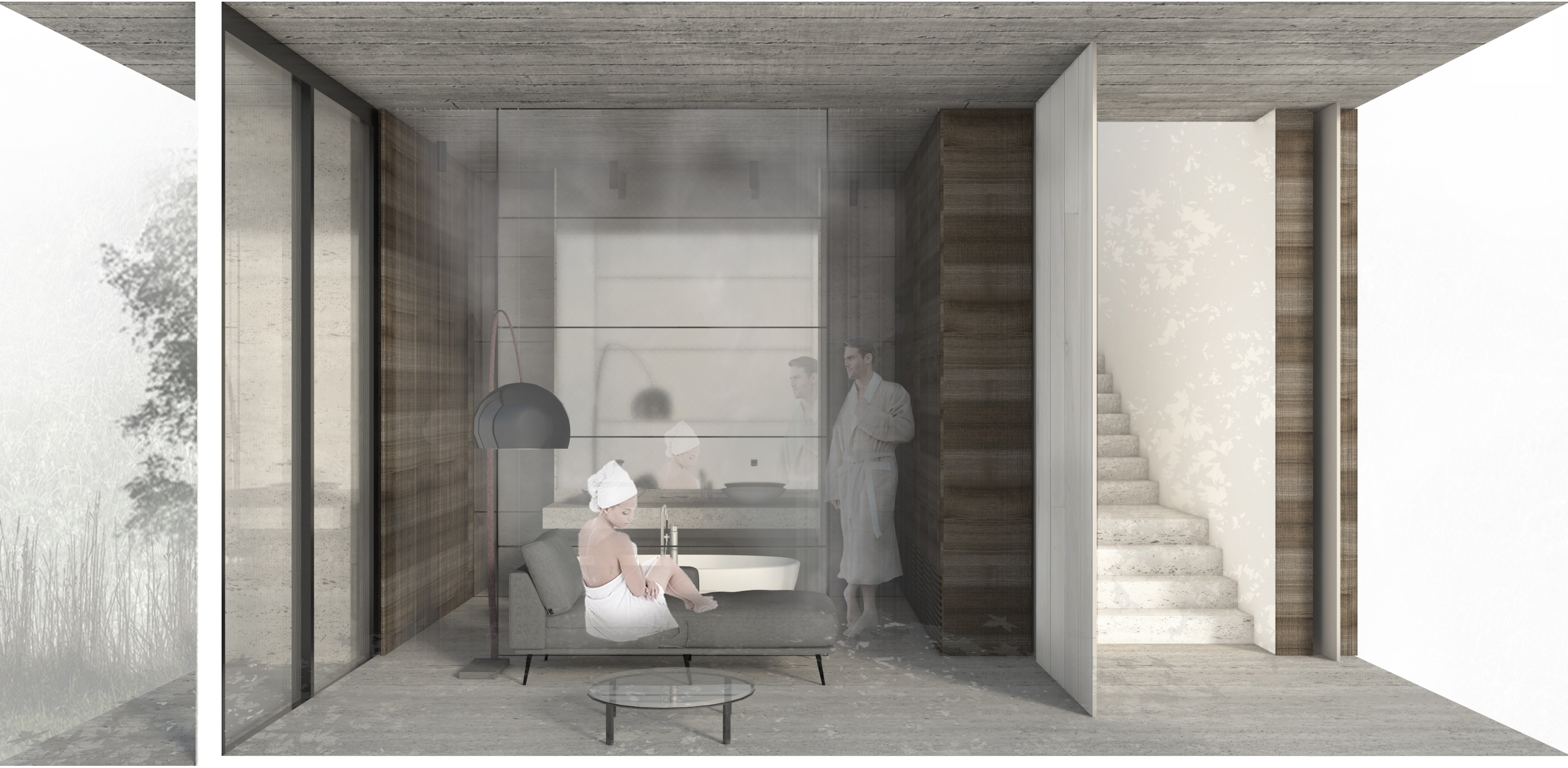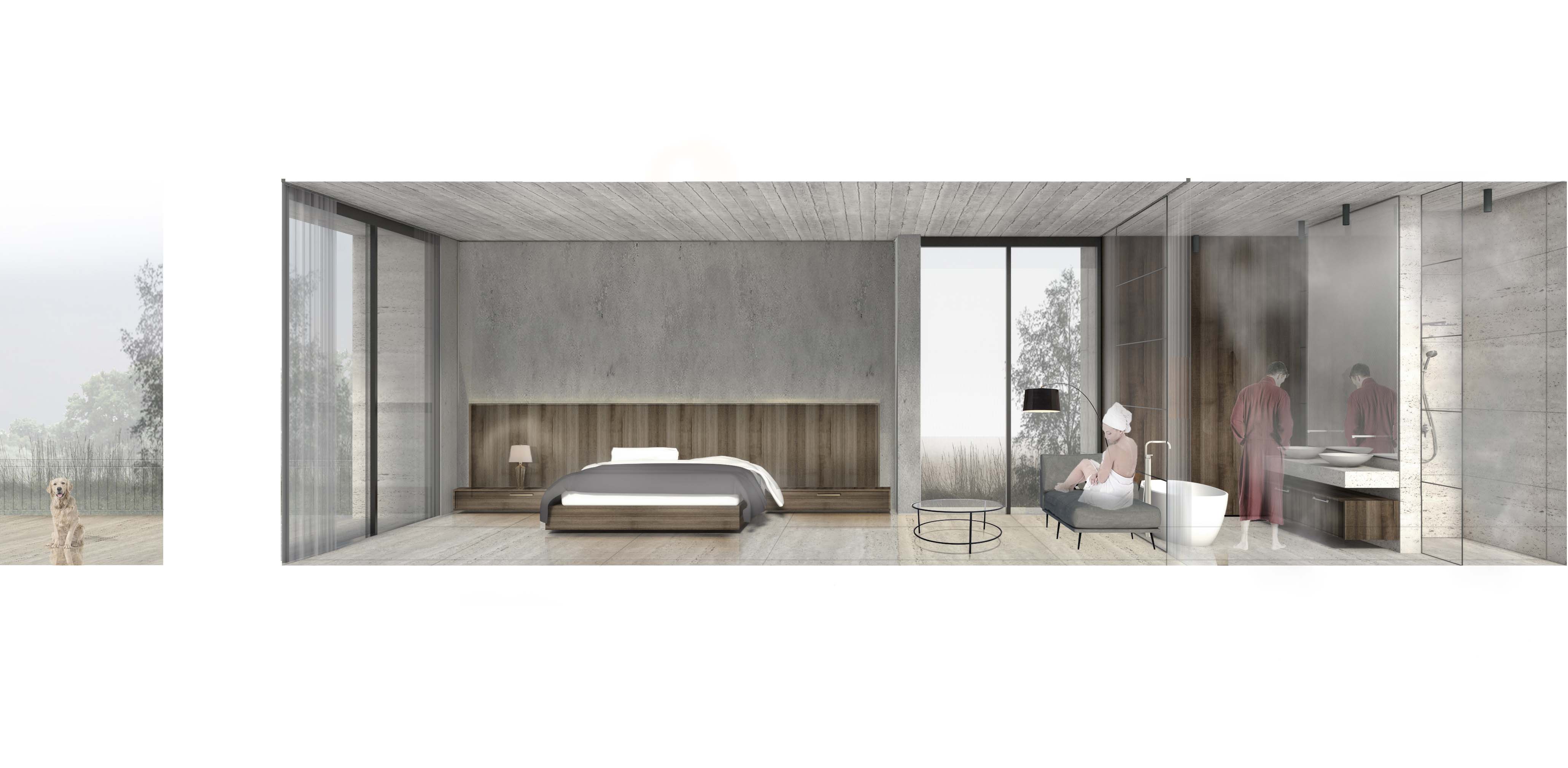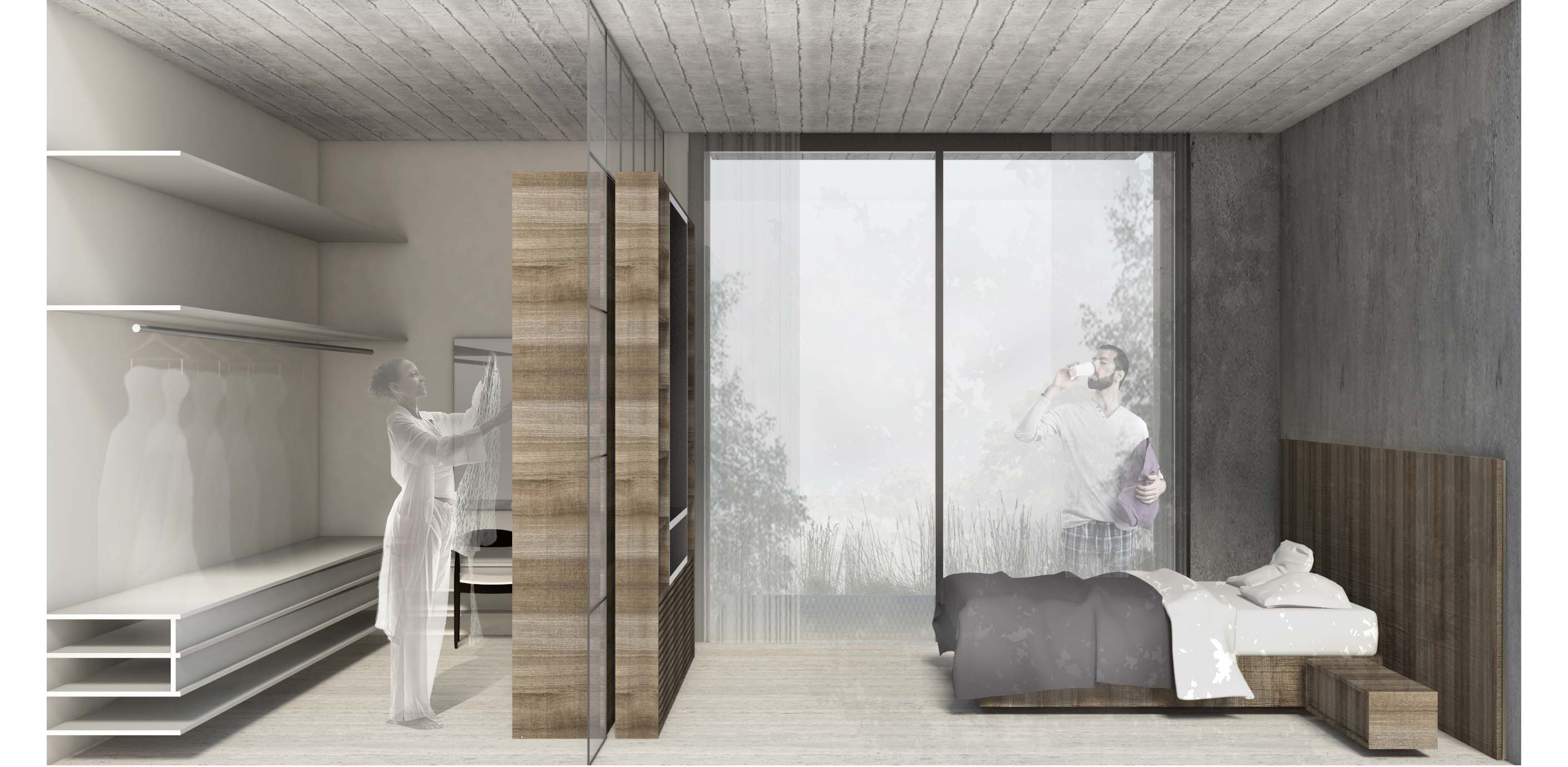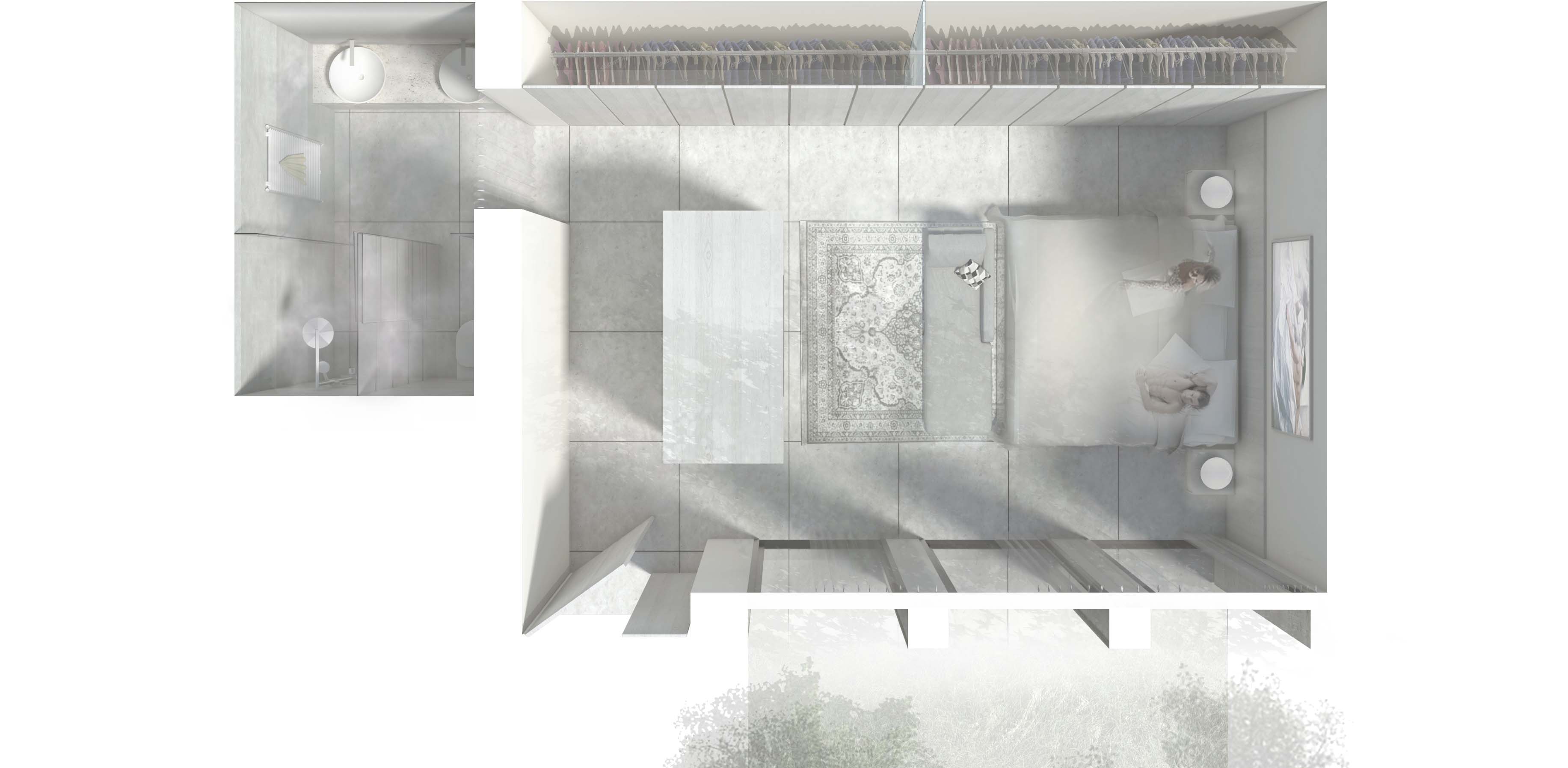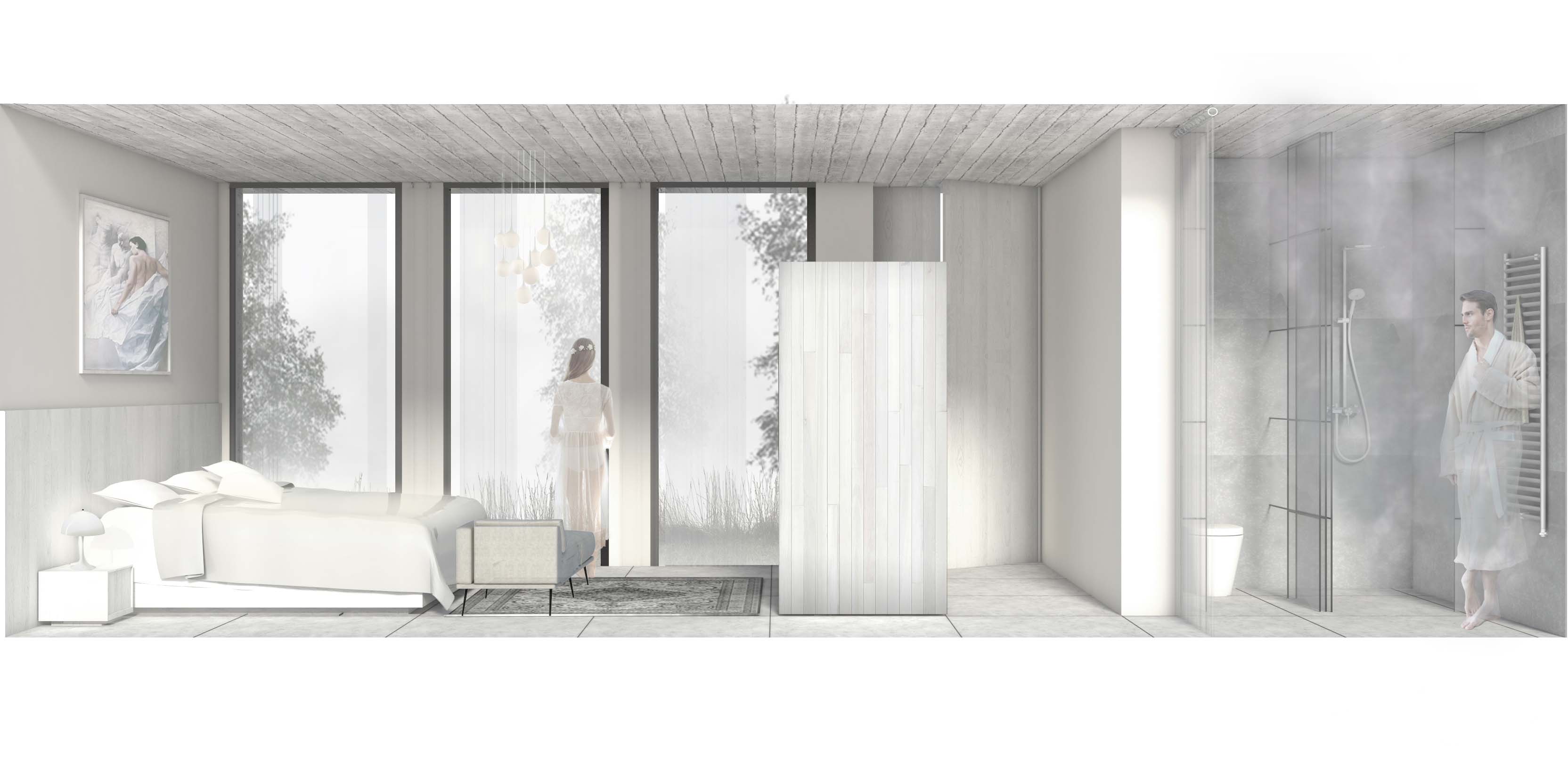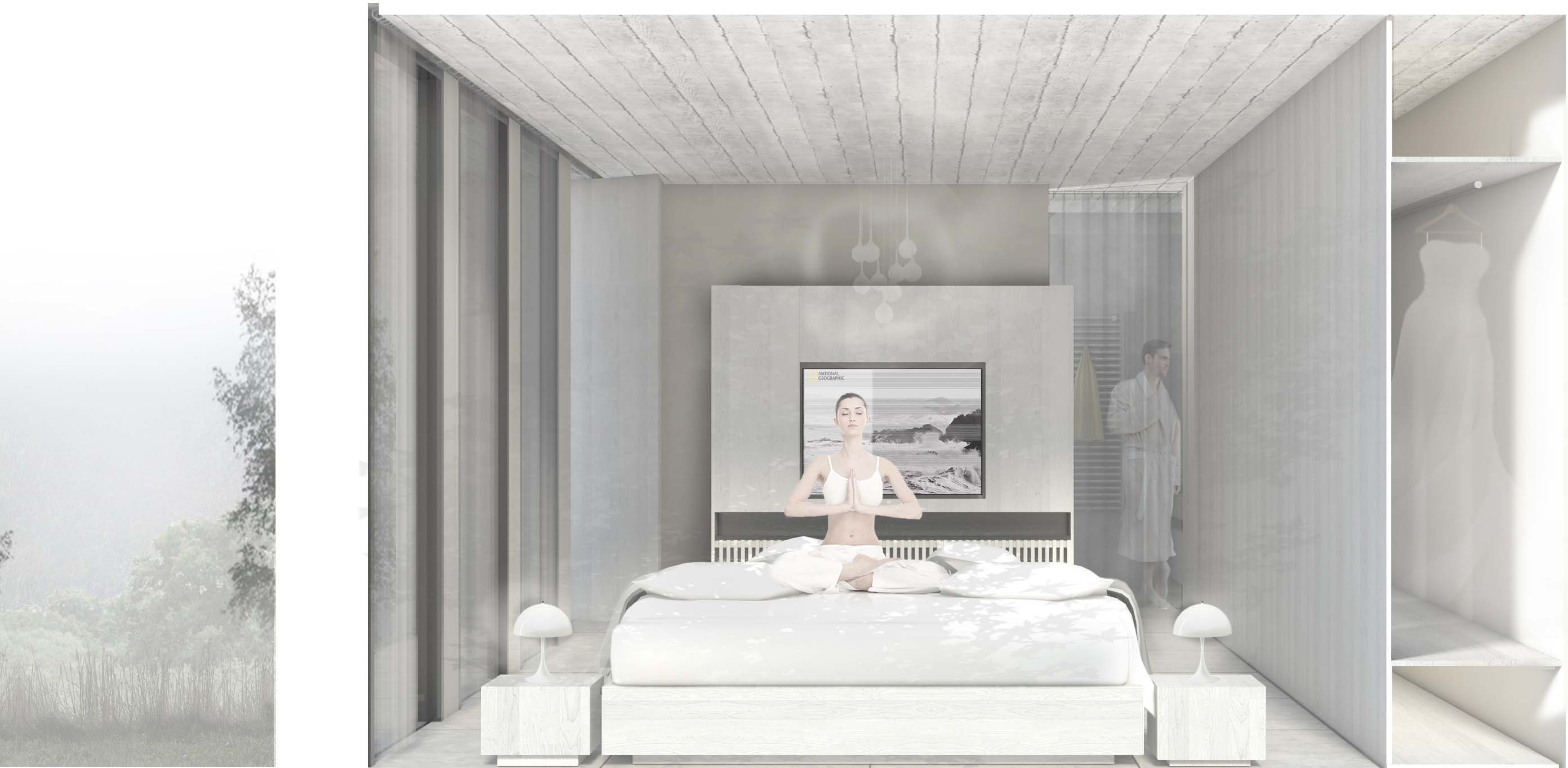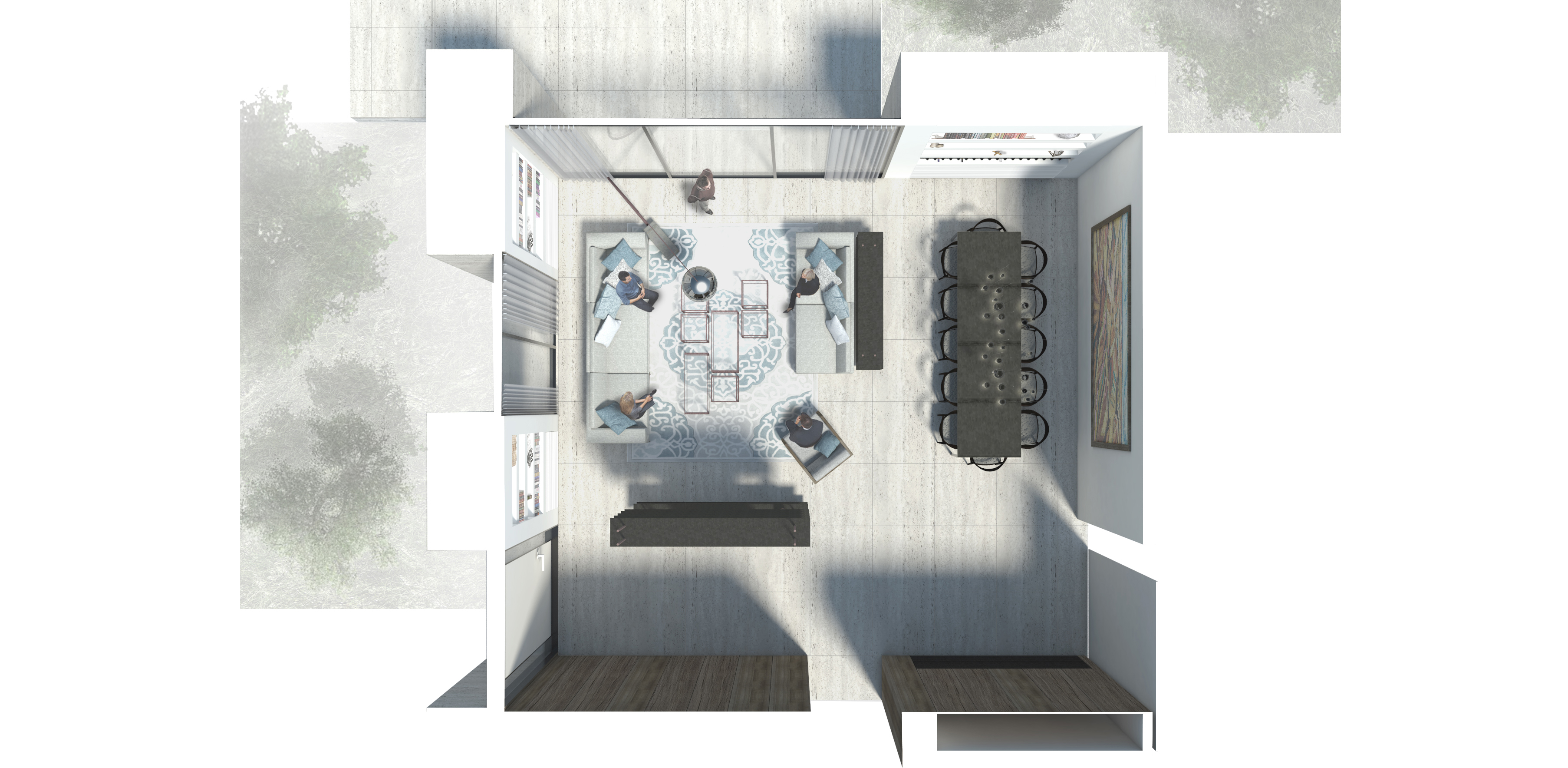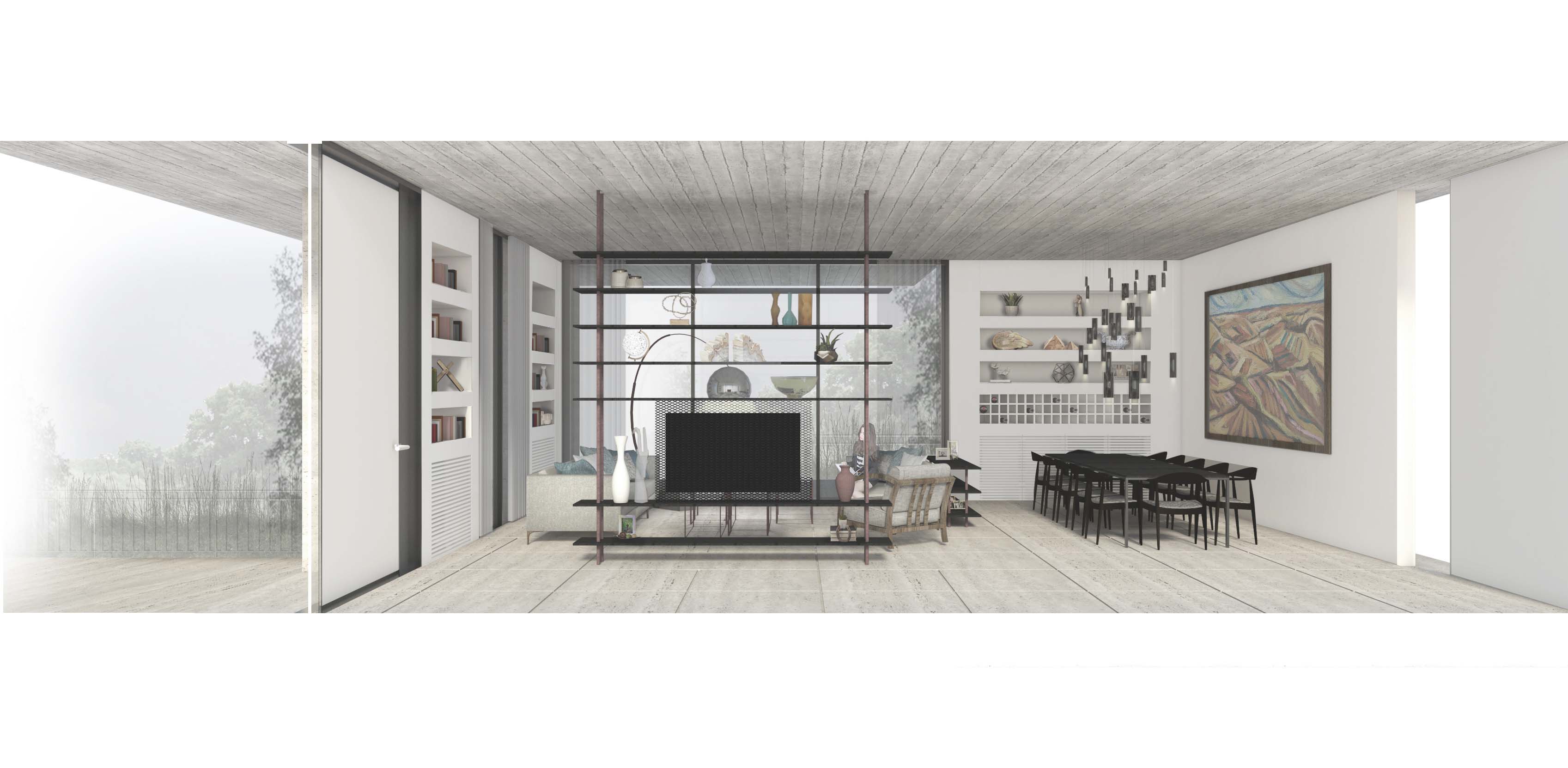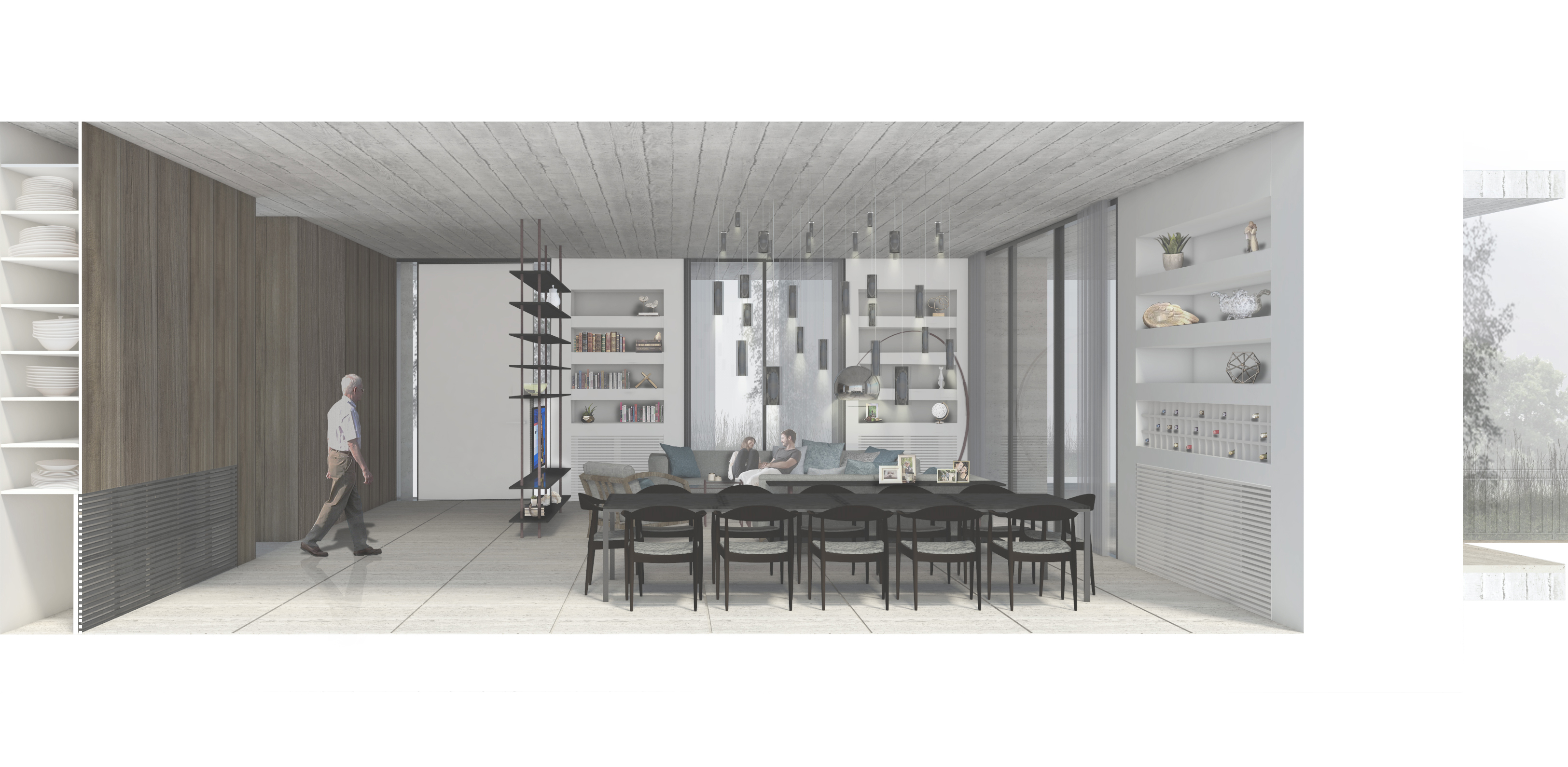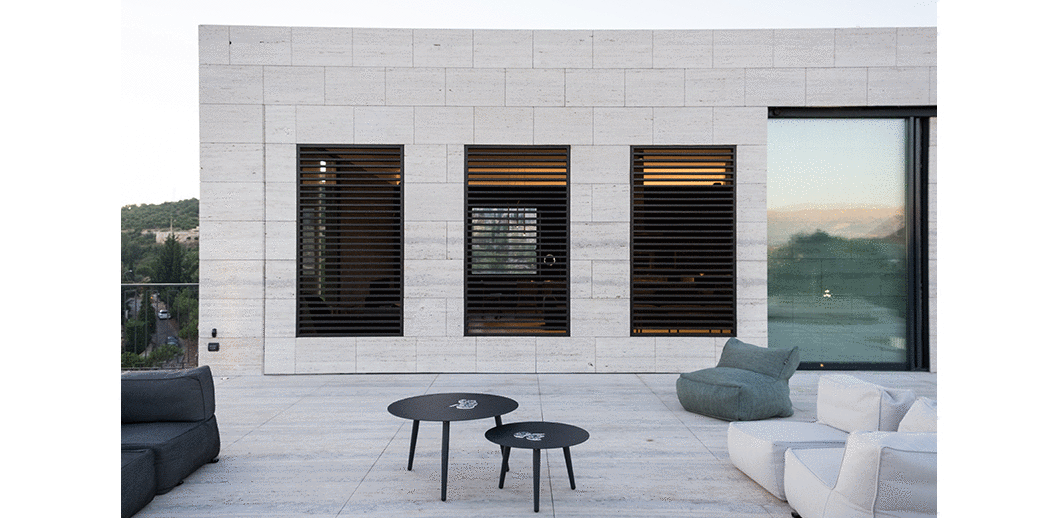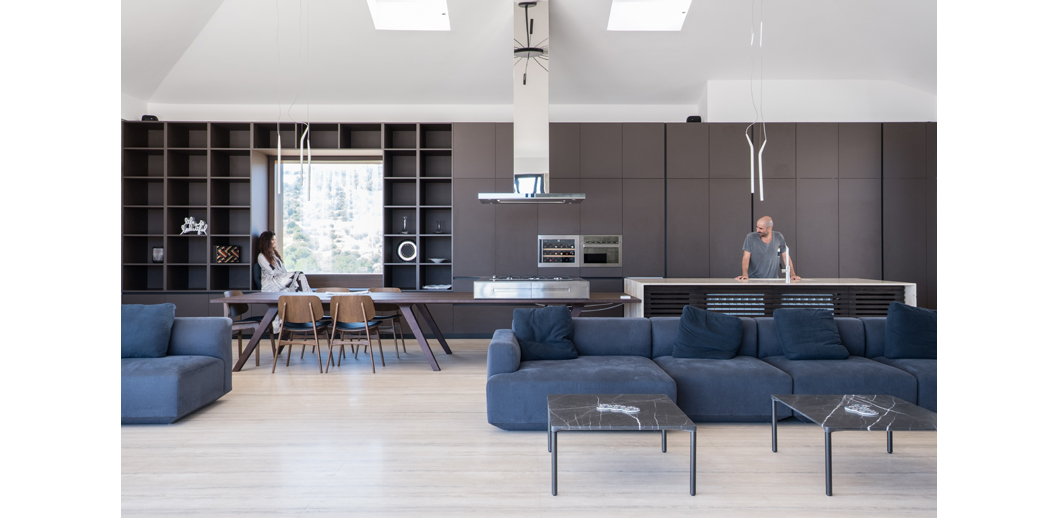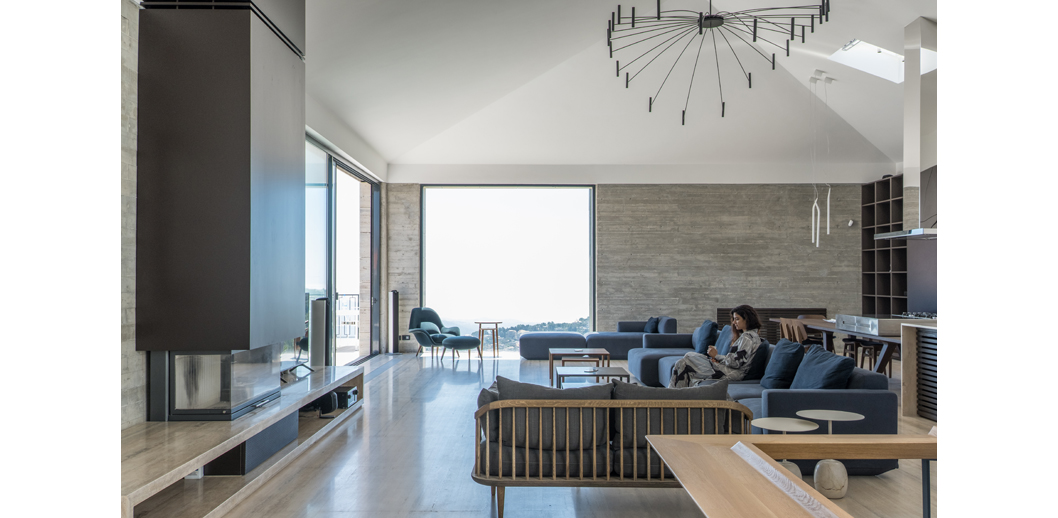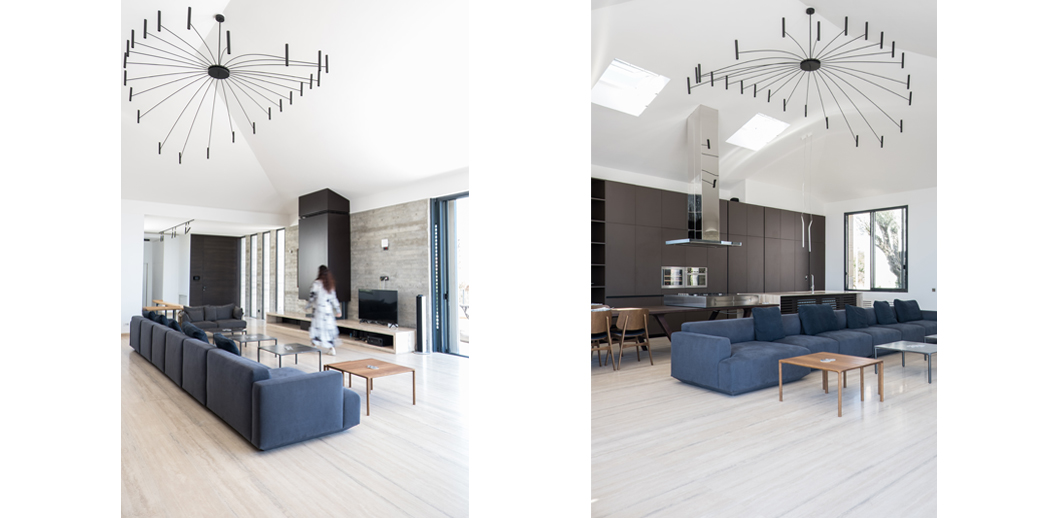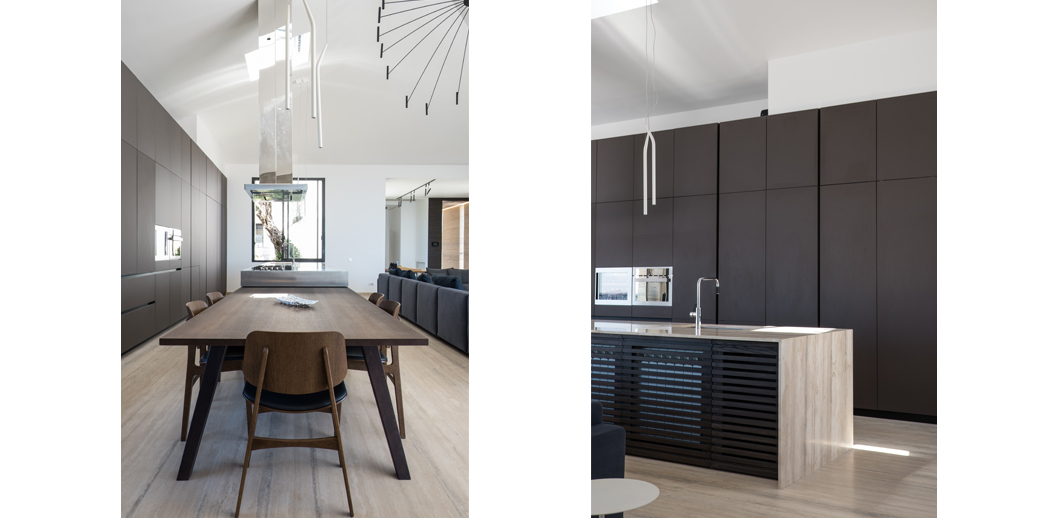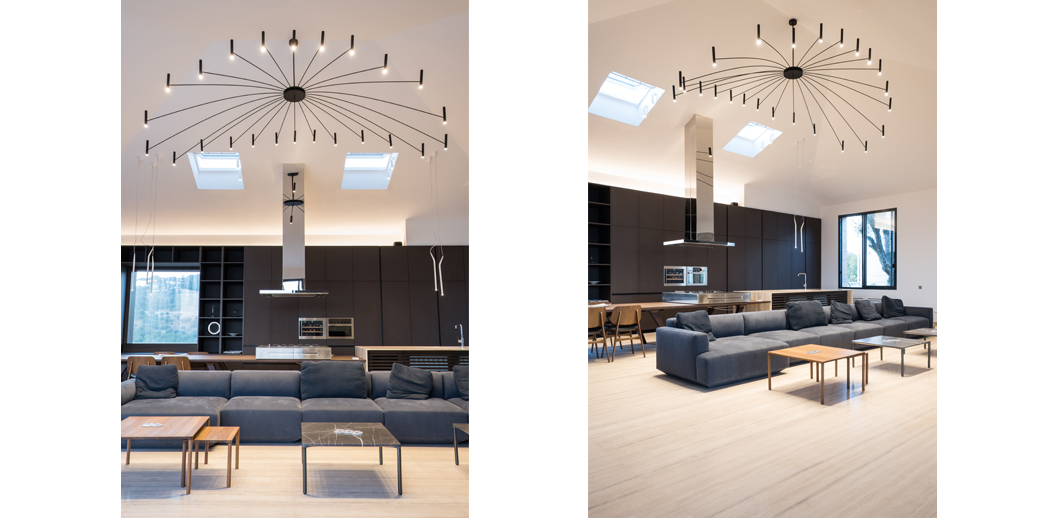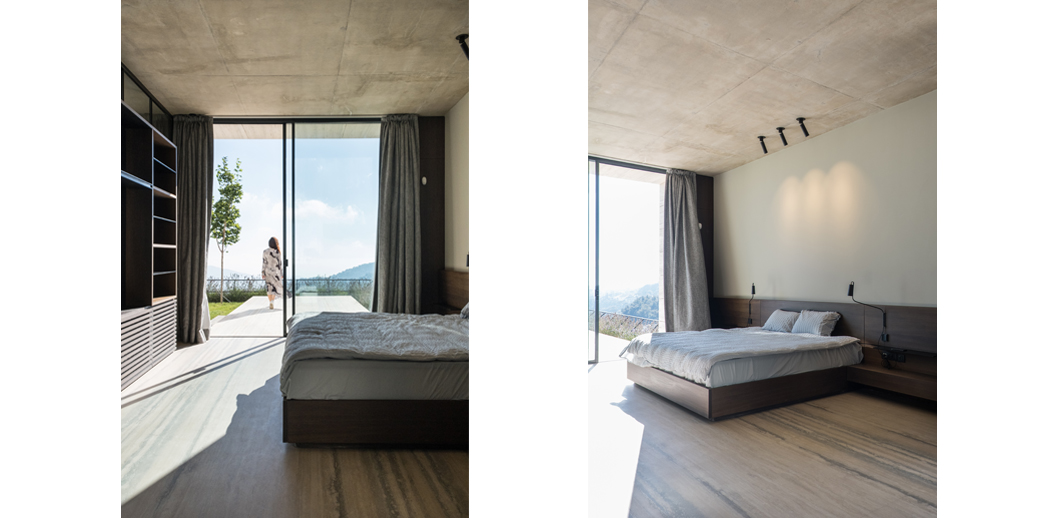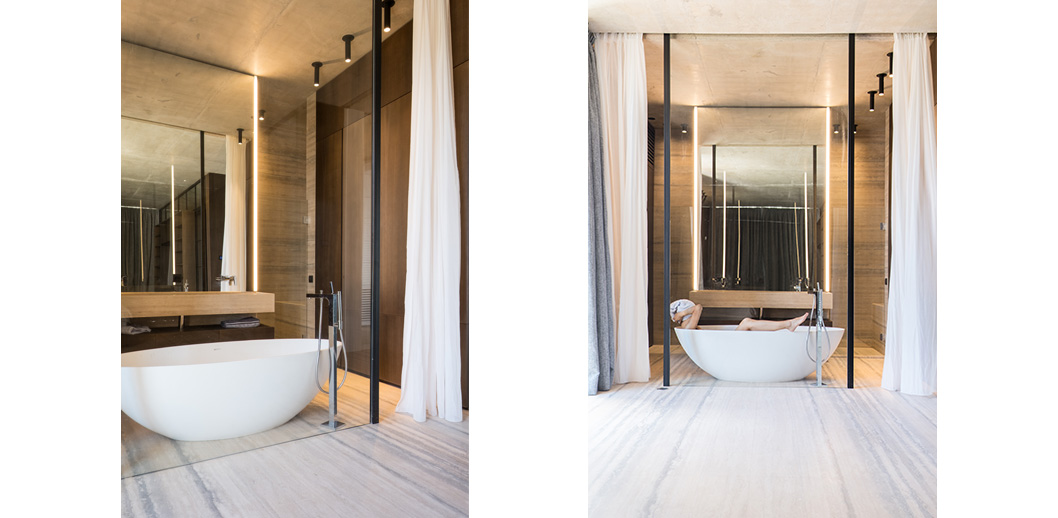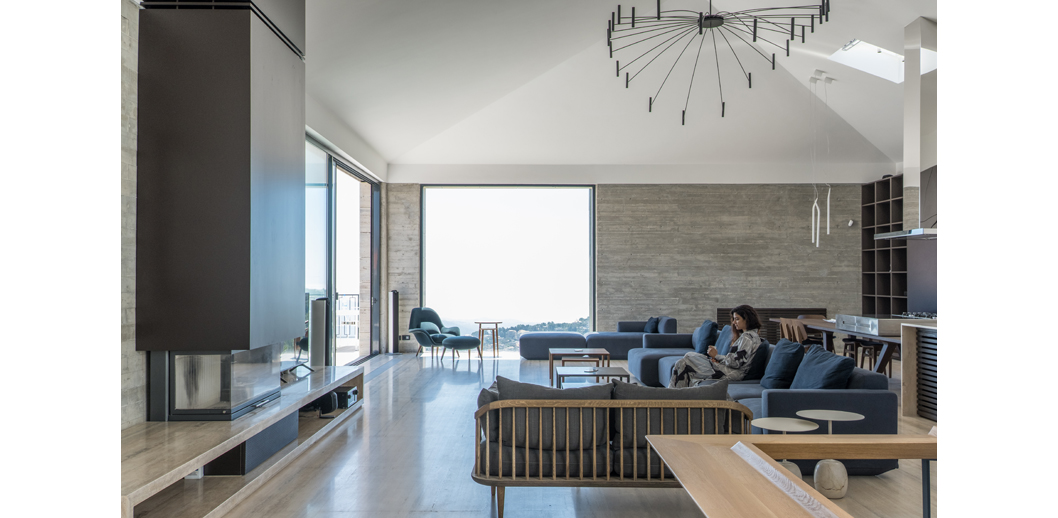Overview
The design of the DK project attempts to reinterpret the vernacular typology of its context and to celebrate it. Articulated with sliding and hinging walls, the facades become a live surface for expression for this contemporary vernacular house, opening it up to celebrate the landscape, or reining it in to pay homage to it.
Location
Set in the sensitive context of Deir el Qamar, a protected historical village with well-preserved examples of feudal architecture, old stone streets and walled gardens, the site overlooks a historic landscape rich with beauty, inspiration and cultural heritage.
Perspectives
Evolving from a critical appreciation of the villages’ traditional vernacular, the design flirts with its landscape and at times challenges it. The volume of the upper level is sensitive to the typology of the traditional stone house and the relationship it has to the expanse of the large open terrace cantilevering out to embrace the valley, encircling the house and extending its interior spaces out to meet it.
Concept
The architectural language of the house is designed to offer a flexibility of use and experience, with the possibility of different scenarios of access and circulation within its adaptable structure.
Diagrams
The interior design of the DK project attempts to reinterpret the vernacular typology of its context and to celebrate it, opening it up to celebrate the landscape. The dynamic of the space, flowing around free standing elements of the house, is often interrupted by sliding and hinging doors to give the spaces hierarchy and multiple scenarios.
The pliable nature of this architecture, allows shaping the space within desire, giving DK house this vernacular feature.
DK - AI

Team: Rani Boustani, Elias El Soueidi, David Andos
Structural Consultant: BCDC consultants
MECHANICAL CONSULTANT: Roger Kazopoulo
Electrical Consultant: Roger Njeim
Photographer: Julien Harfouche and Tony Elieh



